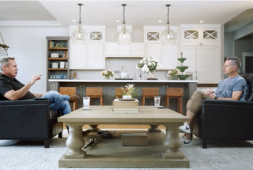Today’s front pages are often littered with articles about new interesting risky behaviors teens are practicing. Teenagers drive too fast—while texting! They send racy messages/pics to one another via cell phones, and they engage in academic cheating via the Internet.
These new vices are indeed dangerous. But let’s not forgot the good old fashioned self-destruct mechanisms called controlled substances at their disposal, as well.
More Than a Sip
I’ve written about teenagers’ use of alcohol before, but it’s an ongoing problem, thus studies on the issue are ongoing. And it’s not a pretty sight.
According to research from Science Daily, one in five underage students have driven drunk in the past month. The same report also discovered that 43% of underage students admitted to riding in a vehicle with someone who was intoxicated at the time.
Talk about risky.
And those risks are not without consequences. For instance, The Substance Abuse and Mental Health Services Administration estimates that teenagers’ alcohol-related visits to the Emergency Room over Memorial Day weekend (the “unofficial” start of summer) are always about 11% higher than other weekends of the year.
Teenagers and alcohol consumption sounds like an extreme problem. I guess the only solution is an extreme one.
Enter Rankin, the highly controversial photographer known for his work on other projects such as a graphic anti-smoking ad from 2009. In a brand new viral video, the cinematographer shows viewers the potential difficulties of a night on the town: “Lose control and you could lose everything.” (Be warned: this video is graphic. It shows some mild violence, some partying, and plenty of vomit. But understand, I would have no problem showing this to kids.)
Will these kinds of ploys actually work? Maybe.
The attention responsible adults have focused on this particular problem over the years has paid off to some extent. The Youth Risk Behavior Survey, which studies the self-inflicting behaviors of teens that lead to their “death, disability, and social problems,” found that teenagers’ use of drugs and alcohol (CLICK HERE to view this fascinating chart) showed some change in the 90’s (with cigarette and marijuana use going up), but has actually decreased some in the 2000’s. Most researchers agree that we’ve seen a 10 year decline in the last decade, but don’t get too excited. The Partnership for a Drug Free America have noted a recent spike. (If you examine these two reports side by side, you’ll see some slight disparity. These sorts of conflicts are nothing new; we’ve written about them before. Regardless of these differences, all these studies agree that drugs and alcohol are still a problem.)
A ten year decline would be good news, but….
Up in Smoke
This same report revealed that two risky behaviors have actually increased during that same time: problems associated with bullying, and cigarette smoking.
The latter is of little surprise to me. I’ve watched “hookah lounges” pop up all over my city in the past five years. (If you’re as clueless about hookah as The Office’s Michael Scott is, just know that hookah is a type of water pipe used to enjoy the cooled, colored, and flavored smoke of tobacco. And yes, it’s completely legal, assuming one is of the correct age.)
Young people have definitely developed an attraction to hookah. The medical journal Pediatricsdiscovered that 23% of young people (18-24) had used hookah at least once in the past year.
Comparing hookah to its older cousin the cigarette, The Center for Disease Control reports that 46% of high schoolers have smoked a cigarette at least once. Unfortunately, 19% of high schoolers also reported current cigarette use (smoked cigarettes on at least 1 day during the 30 days before the survey).
Bad Medicine
But teenagers aren’t just smoking and drinking these days. They’re also popping pills…just not the kind of pills that were purchased in back alleys of the 1970’s.
Nope. These days, kids are much more likely to just go to their parents’ medicine cabinet to get their fix.
The Center for Disease Control found that, on average, roughly 20% of teenagers have inappropriately used prescription drugs, for instance, taken medication prescribed to other people, taking too much medicine at one time, etc. When that average of 20% is broken down by race, you’ll find that white kids abused prescription drugs the most (23%), followed by Hispanics (17%), and then blacks (11%).
If prescription medication abuse sounds more hygienic to you, or somehow safer because it comes from within the home or a friend’s home, bear in mind that it was overdoses of prescription meds that killed Michael Jackson, Adam Goldstein (aka, DJ AM), and Heath Ledger in the very recent past.
Keeping Control
This article’s quick glance at some of the leading controlled substances available to teenagers may cause parents and youth workers to lose heart. After all, our communities, schools, newspaper headlines, and even churches have their fair share of stories related to young people getting mixed up with drugs. And tobacco products and alcohol are sold on every street corner…including inside pharmacies, which is the zenith of irony, in my opinion.
So, how can loving adults help teenagers avoid a blurred reality? A big part of the solution is as simple as a conversation.
- Talk first. Don’t get behind the 8-ball! You don’t want to correct problems; spend your time preventing them. Make sure that your voice is the first voice your teenagers hear as it relates to alcohol, tobacco, and drugs (be they prescription or illegal). You have an “in” with your kids…use it!
- Talk often. And after you have that first conversation with them, have another one. And another one. And another one. Any parent knows they must tell their teenager to clean their room 47 times before the carpet is finally discovered under the pile of debris that collects in a kid’s bedroom. So why do we think (just) one conversation about drugs, tobacco, and alcohol will do? You don’t have to lecture them, nor do you have to sound like a broken record. Just make sure this message is a consistent one to the teenagers in your life.
- Talk truthfully. There’s no need for scare tactics or sensationalism when it comes to teenagers’ encounters with these substances. It’s a guarantee that our teenagers won’t be getting the truth from the world. Make sure that you are a source of unquestionable truth.
Without your help and guidance, the chances of teenagers experiencing a blurred reality increase significantly. So, do all that you can, to the best of your ability, to make sure that the teenagers in your life steer clear of the destruction known as controlled substances.
David R. Smith
David R. Smith is the author of several books including Christianity... It's Like This and speaks to parents and leaders across the U.S. David is a 15-year youth ministry veteran, now a senior pastor, who specializes in sharing the gospel, and equipping others do the same. David provides free resources to anyone who works with teenagers on his website, DavidRSmith.org David resides with his wife and son in Tampa, Florida.



